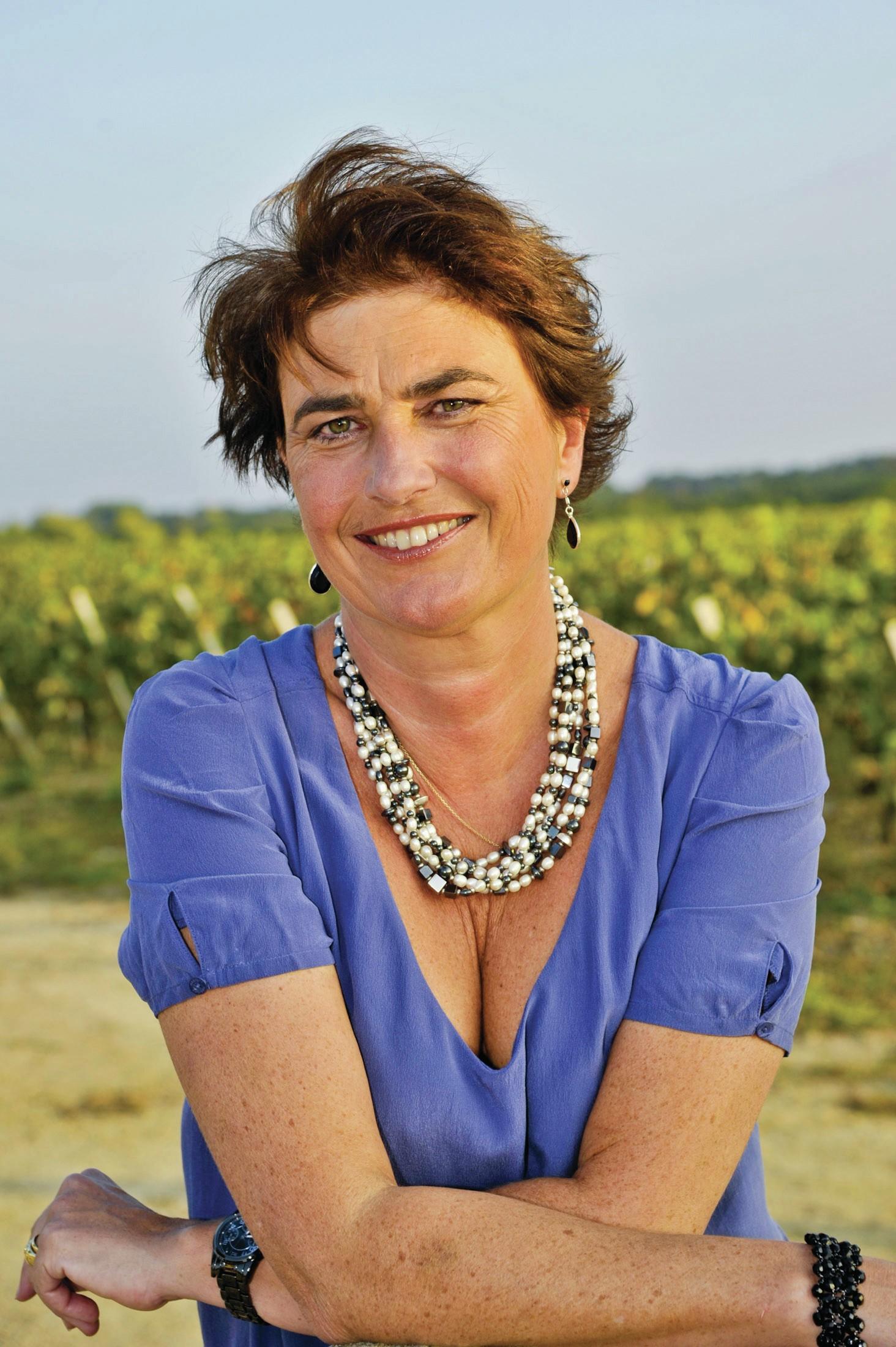The Big Interview: Catherine Leparmentier
Great Wine Capitals has helped to elevate world wine tourism to new heights – and Catherine Leparmentier has been tasked with guiding the initiative since its inception, writes Roger Morris.

OVER THE past 25 years, Catherine Leparmentier has had a front-row seat as the world wine industry has transformed. Jolted by the quickly emerging energy of wine tourism and, with it, the growth of direct-to-consumer experiences and wine sales, the industry saw a global coming together of wine producers and drinkers like never before. As of 2023, the global wine tourism market was estimated to be worth US$85.1 billion – and that sum is rapidly increasing.
Although thousands of wineries worldwide and millions of people in the wine trade have taken part in this relatively recent tourism phenomenon, no one person has been more instrumental in driving forward these changes than Leparmentier, whose offices overlook the quais of Bordeaux, where she heads both Bordeaux tourism and serves as secretary general to the global network known as Great Wine Capitals (GWC).
As recently as 30 years ago, there were few wine-producing areas outside northern California that threw open their doors to anyone other than professional wine buyers, and certainly not in staid Bordeaux. Securing a visit with a tasting at a prominent château, especially one on the Left Bank, was almost as difficult as getting an audience with the Pope.
Weeks of preparatory letter-writing by mail or by fax were generally involved, and greeting guests was a chore most owners and château directors undertook somewhat reluctantly – a favour to a wine merchant who had requested it for “a very good customer” who happened to be on holiday, for example.
New generation
Today, a new generation of winery owners who run these multi-million-dollar businesses consider tourism as a major revenue stream, one without middlemen, and their hospitality directors – positions that didn’t exist a few years ago – now avidly compete for the tourism awards given out annually by Leparmentier ’s Great Wine Capitals. Twenty-five years later, the organisation has member cities in most major wineproducing regions. The original three were: Bordeaux, San Francisco/Napa Valley and Porto. Since then, Bilbao/Rioja, Mainz/Rheinhessen, Lausanne, Verona, Adelaide/South Australia, Mendoza, Valparaiso/Casablanca Valley, Cape Town and Hawke’s Bay have all been added.
Leparmentier well remembers the moment of GWC’s genesis. The vehicle for creation was her former boss, who had a dream, and then tasked Leparmentier with making it come true. Robert Beynat, the man who started Vinexpo and who headed the Bordeaux Chamber of Commerce and Industry in the late 1990s, wanted to create an organisation linking the world’s great wine cities that had famous wine regions nearby – but only one “capital” per country.
“Robert came to me one day in the late 1990s and explained it to me,” Leparmentier recalls, and she agreed it was a great idea worthy of exploring. “Then he said: ‘Well, Catherine?’”
From that day on, Leparmentier owned this idea, and in 1999 she launched a worldwide network of wine cities with an emphasis on tourism, creating something that had never before existed.
Leparmentier seems born to do this job – intelligent, collaborative, enthusiastic, practical, hard-working and goal-driven, but at the same time able to relax over a long lunch with a glass of wine while talking business with a wine writer or a trade executive.
“Our ongoing challenge is communications between members,” Leparmentier says. “It’s a very diverse group from diverse places. When we’re meeting online, someone is always having to get up in the middle of the night to participate.”
She has learned through the years to grow slowly, only admitting new members who are well-organised. At any one time she “always has several enquiries on my desk,” she reports, “and we are looking at two or three who may be serious possibilities. To qualify, first the wines need to be great and, second, there needs to be a large city nearby.”
A native of Bordeaux, Leparmentier graduated in 1986 from Bordeaux Montaigne University in Pessac with a master ’s degree in languages. She began immediately working in the Economic Ministry, with an emphasis on advising Bordeaux firms, and spent one year based in Zurich before joining the Bordeaux Chamber of Commerce and Industry in 1997. She has worked there ever since. Married, with two daughters in their early 30s, Leparmentier says her love outside work is music. She sings alto in the well-regarded Groupe Vocal Arpège de Bordeaux choir – “mainly classical music, Baroque and Renaissance”, she says – and for a time headed the group. “When I travel as a tourist, it usually has to do with a musical event,” she says, before adding, “but hopefully there is a winery to visit nearby.”
Tourism awards
From its inception, GWC has helped to connect cities and the wine trade with business services and education, as well as delving into issues such as sustainability, but it has been its annual wine tourism awards – both regional and global – that have driven tourism.
Not only are winery initiatives and accomplishments rewarded, but wineries in other regions will often adapt or copy ideas from other regions for themselves – a kind of proving ground for best practice. Categories include: accommodation; architecture & landscape; arts & culture; innovative experiences; sustainable experiences; restaurants; and services.

Sweeping views: Hawke’s Bay became a Great Wine Capital last year
Both well-known and lesser-known wineries have become successful entries. The 2024 global winners, for example, include Alkina Wine Estate in the Barossa Valley; La Casa Cosme Palacio in Laguardia, Rioja; Château Giscours in Margaux; Benguela Cove in the Cape Winelands; Steins Traube in Rheinhessen; Bodega Alpamanta in Mendoza; and Casas del Bosque Winery in Chile’s Casablanca Valley.
As Leparmentier has noted, a region that wants to develop tourism must first have great wine and, generally, affordable quality wines as well, and a dining scene to go with them.
“Food is a big thing,” she says, “because today’s tourist expects to be able to have gastronomical experiences as well as great wine.”
Many visitors now expect to enjoy food at wineries, if not at the restaurants and cafes that many now offer, then at least in the form of wine and food pairings in the tasting rooms. While comfortable lodging is important, it is less crucial to success, Leparmentier says. “With the younger generation, they often expect to have experiences, even in the tasting rooms, and they tend to be very cosmopolitan.”
In addition to San Francisco and Napa Valley, she cites other major wine tourism successes. “Here in Bordeaux, there was very little tourism 25 years ago, and 10 years ago it was still developing. Today, it is a major business,” she says. “Porto is also doing very well, partly because the city of Oporto made a lot of financial investment. And Mendoza is even starting to become overbooked, partly because Argentines are now visiting the city from as far away as Buenos Aires, which they used not to do.”

Going nowhere: Leparmentier isn’t ready for retirement any time soon
Leparmentier explains that, when the deadly Covid-19 pandemic interrupted international commerce, “we had two years when travelling was almost not possible, so many wine regions and wineries had to reinvent tourism. In Europe, including here in Bordeaux, few local people traditionally visited local wineries. They just bought bottles at wine shops.
“In Napa Valley, there had been a tradition of catering to local and nearby residents to visit their wineries,” she says. “During Covid, we learned to do that in Bordeaux. People began taking their weekends to drive to local wineries.” GWC helped to popularise in Bordeaux and elsewhere such American innovations in tourism as recruiting for wine clubs during visits and staging weddings and engagement parties amid the grandeur of vines and stately buildings.
Economic bonanza
In fact, the success of wine tourism has sparked criticism that tourism itself has become a problem in some regions in spite of its economic bonanza. However, Leparmentier believes that the problems are often generalised and overstated.
“There are traffic problems in Napa Valley because it’s between mountains with one major highway,” she says, “but we don’t have that problem in Bordeaux, where everything is spread out. And people tend to not like cruise ships,” she adds, before noting that their visits have helped to revitalise downtown Bordeaux and the area around the Cité du Vin visitor attraction.
Where does wine tourism go next?
“We see our next opportunity in expanding the wine tourism season. It used to be that it was from June to September [in the Northern Hemisphere],” Leparmentier says. “Now it has been extended further, even to 10 months. What wineries are learning to do is to find new year-round experiences for visitors based on the season.”
Additionally, she says, Bordeaux is now extending its tourism reach to an expanded Nouveau Aquitaine region, noting that increasing tourism to the nearby Cognac region may have some difficulties as many distilleries don’t have tasting rooms.
One thing that isn’t expected to change any time soon is the leadership of GWC. “People ask me when I’m going to retire,” Leparmentier says. “But I love my job – and I’m not through yet!”
Related news
The Big Interview: Stephen Henschke
